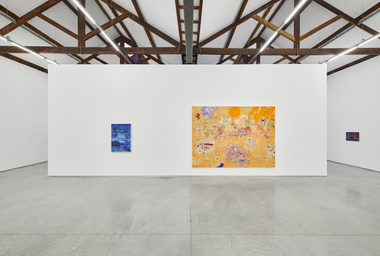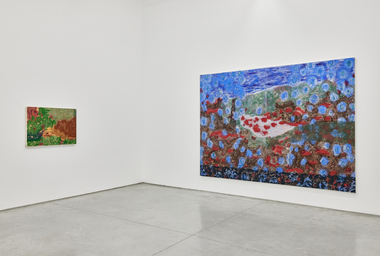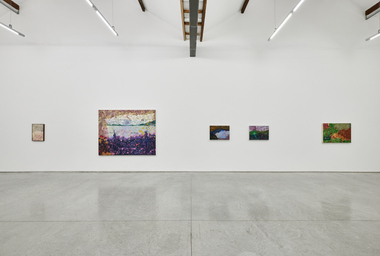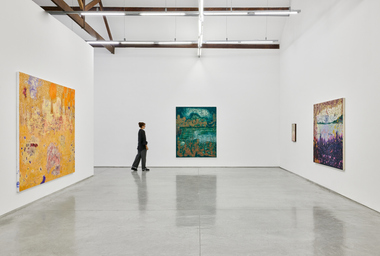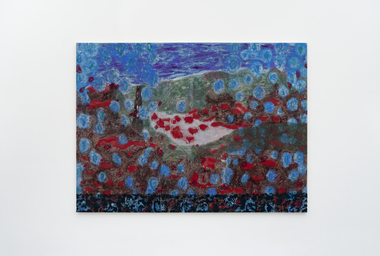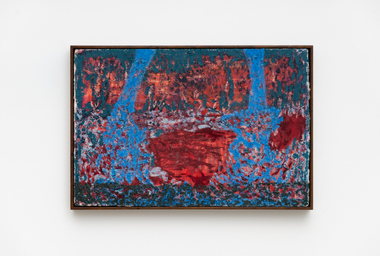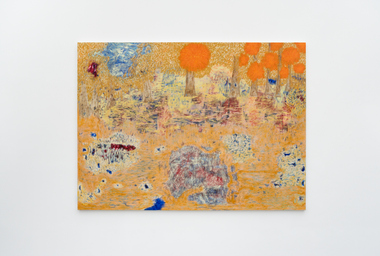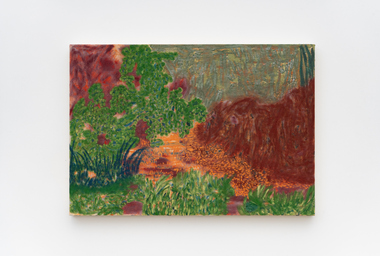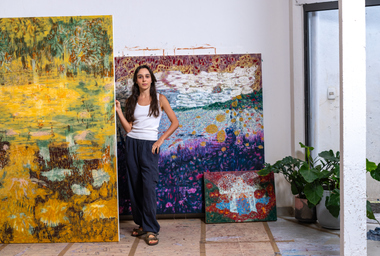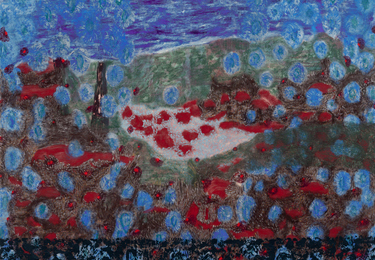
Sophia Loeb
Panta Rei sobre a Estrata
Jun 5 – Aug 2, 2025
Opening
Jun 5, 6 pm–9 pm
Carpintaria
Rua Jardim Botânico 971,
Rio de Janeiro
Directions
Download
Fortes D’Aloia & Gabriel is pleased to present Panta Rei sobre a Estrata, Sophia Loeb’s first solo exhibition in Brazil, at Carpintaria, Rio de Janeiro. The show features a new group of paintings that explore layers and material strata in transformation.
Born in Brazil and based in London, Sophia Loeb creates paintings that evoke amplifications of imperceptible biological processes or translations of cosmic eruption, bridging the gap between celestial and microscopic environments. Vibrant tones and stark contrasts reveal the importance of sensorial reverberations in her work, luring viewers into a tactile, magmatic visual field.
The artist’s process is dynamic and immersive: canvases are rotated, tilted, and worked from multiple angles, while materials—liquid and powdered pigments and oil sticks —are layered, scraped, and reworked in constant dialogue with the surface. Guided by matter itself, each color is applied with gestural motions, implying the artist’s interest in bodily involvement. This awareness stems from her early work as a sculptor, a discipline from which she draws physicality and touch, leading to dense, voluminous compositions that suggest geological phenomena and mineral shifts.
Loeb’s recent move to a São Paulo studio provoked a shift in her palette and new attention to the city’s specific atmospheric conditions. In tune with the local weather, rain, vapor, humidity, and aquatic states appear as specific structures of feeling and formal rhythms.
In Seu Olhar me Fascina (2025), the artist paints a composition in twilit tones with amoeboid trees circling a what could be body of water, bathed in deep blue light. The work is thematically and formally liquid, with calm and turbulent passages ebbing and flowing in pictorial space.
“Her canvases do not fix an image: they sustain what vibrates, what changes, what has not yet found form. The surface becomes a field of interaction between color, body, and time — a space where the visible is unstable, and form is always provisional. By insisting on processuality, her work affirms an ethics of contact: instead of imposing, it listens; instead of fixing form, it sustains its permeability and impermanence. Her works seem to follow what moves — opening cracks for presences that do not yet have a name,” writes Ana Roman, curator and writer, in the critical essay accompanying the exhibition.
